Key takeaways
- Mindfulness for children prioritizes simplicity and presence, helping them acknowledge their emotions through everyday experiences.
- The Calm app offers engaging features like guided meditations and visual animations that make mindfulness enjoyable and adaptable for kids.
- Practicing mindfulness as a family strengthens connections, enhances communication, and encourages shared understanding and empathy.
- Setting routines and keeping sessions short and playful helps maintain consistent mindfulness practices without overwhelming children.
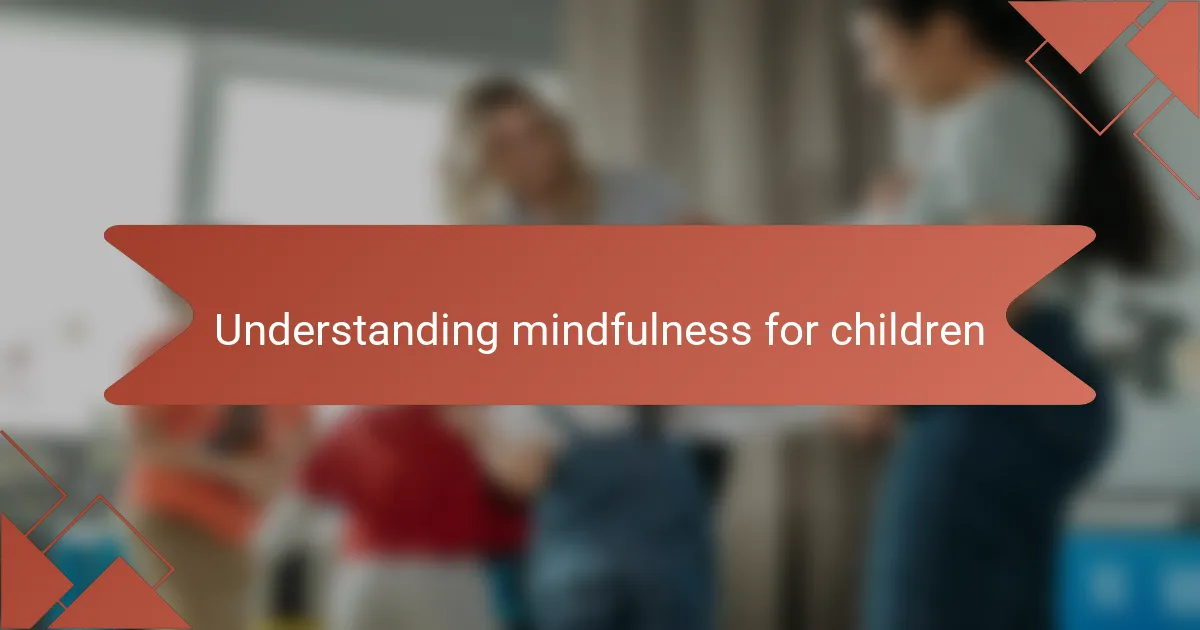
Understanding mindfulness for children
When I first tried introducing mindfulness to my children, I realized it was more about helping them notice their feelings than about sitting perfectly still. Kids have this natural curiosity, and mindfulness taps into that by encouraging them to pay attention to their thoughts and emotions in a gentle way. Have you ever watched a child marvel at a butterfly or get absorbed in the sound of rain? That’s mindfulness in its purest form.
I’ve found that understanding mindfulness for children is really about simplicity and patience. It’s not about rigid exercises but rather about inviting kids to be present with whatever they’re experiencing, whether that’s excitement, boredom, or frustration. When my youngest told me he felt “all tangled up” with his worries, mindfulness helped him find a way to unravel those feelings without any pressure.
Sometimes, I wonder if we as adults overcomplicate mindfulness for kids because we expect big results too fast. But from what I’ve seen, just bringing awareness into everyday moments—like eating, walking, or even breathing—can make a huge difference in their emotional resilience. Isn’t it amazing that something so simple can have such a powerful effect?

Overview of Calm app features
What stands out to me about the Calm app is how thoughtfully it blends guided meditations, sleep stories, and breathing exercises tailored specifically for kids. I remember seeing my daughter’s eyes light up when she listened to a bedtime story that gently eased her into sleep. Isn’t it wonderful when a tool feels less like a task and more like a comforting ritual?
Calm also offers colorful animations and playful visuals that grab children’s attention without overwhelming them. From my experience, this balance helps maintain their focus while keeping the experience light and fun. Have you noticed how kids respond better when mindfulness feels like a game rather than a chore?
One feature I appreciate is the variety—short sessions for busy days and longer ones for more relaxed moments. This flexibility allowed me to fit mindfulness into unpredictable family routines effortlessly. It made me realize how adaptable and approachable mindfulness can be when delivered the right way.
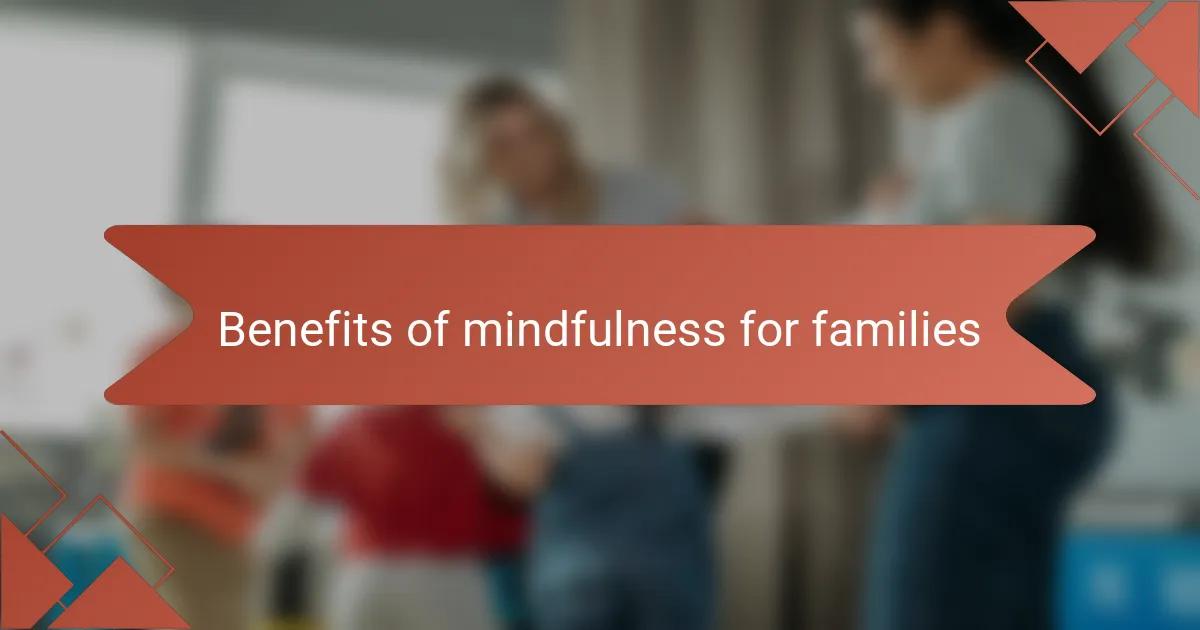
Benefits of mindfulness for families
Mindfulness has brought a surprising calmness into our family’s daily rhythm. When everyone takes a moment to breathe and regroup together, it feels like we’re creating a little safe bubble amid the usual chaos. Have you ever noticed how just a few deep breaths can soften tension at the dinner table? I certainly have, and it’s become a quiet reset button for us all.
What I love most is how mindfulness helps us understand each other better. In those moments of shared stillness, my kids often open up about what’s really on their minds, which leads to more patience and empathy all around. It’s like we’re all learning to listen not just with our ears but with our hearts—a priceless benefit for any family.
I also find that mindfulness encourages healthier habits beyond emotions—it’s helped us slow down and appreciate simple things together, like a walk or a meal. These small shared experiences feel richer and more meaningful now, making our family time feel truly connected. Isn’t that what we all want at the end of the day—more genuine moments together?
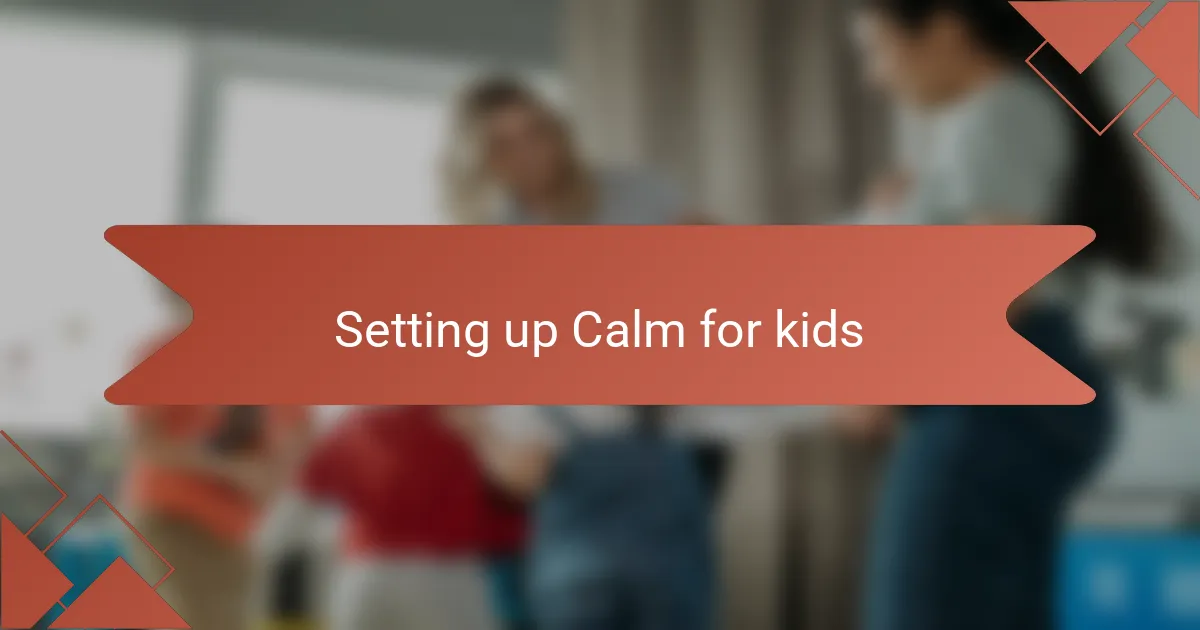
Setting up Calm for kids
Setting up Calm for kids was surprisingly straightforward in my experience. I simply downloaded the app and explored the kid-friendly section with my children, which made it feel like a shared adventure rather than a new obligation. Have you ever noticed how much easier it is to introduce something new when it becomes a family activity?
One thing I quickly learned is the importance of customizing the sessions to fit each child’s personality and attention span. For example, my younger son prefers the shorter breathing exercises, while my daughter enjoys the longer bedtime stories. It reminded me that mindfulness doesn’t have to be one-size-fits-all, and Calm’s flexibility really supports that.
I also appreciated setting up a cozy, tech-free space for our Calm time—just a small corner with cushions and soft lighting. Creating that little nook seemed to help my kids associate the app with relaxation and safety. Isn’t it amazing how a simple change in environment can deepen the mindfulness experience?
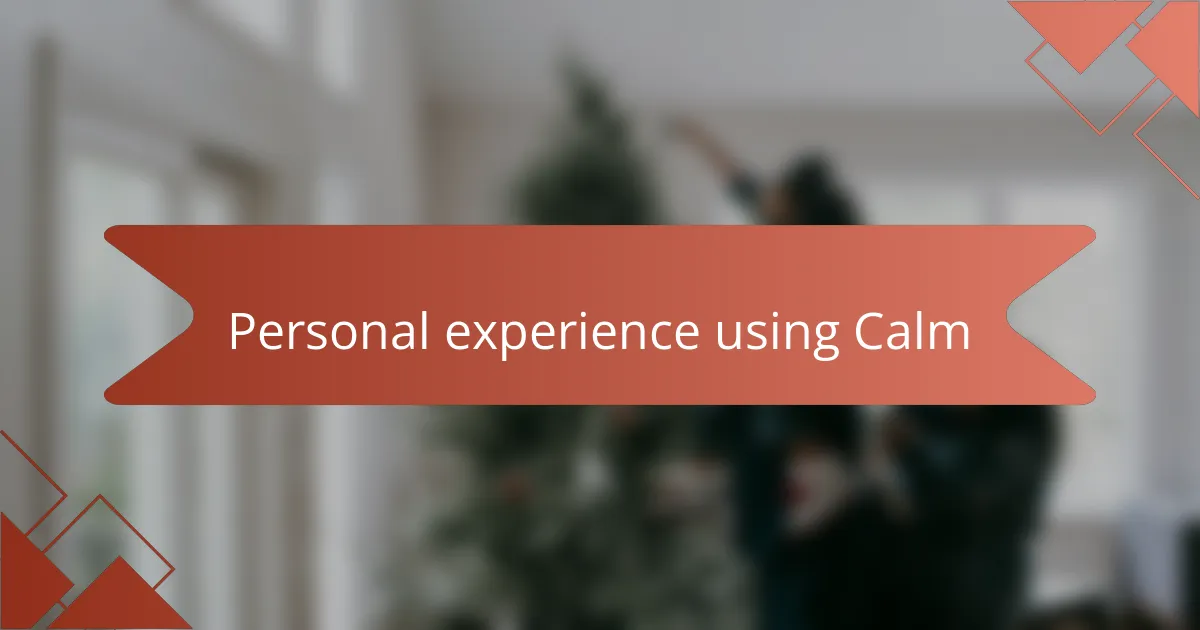
Personal experience using Calm
Using Calm with my children has been surprisingly rewarding. I remember one afternoon when my son, usually restless after school, settled down quietly during a short breathing exercise—seeing that shift in him made me realize how effective the app’s gentle guidance can be. Have you ever witnessed a moment like that, where something simple suddenly helps your child find calm?
Sometimes, I found myself sitting alongside my kids, following the guided meditations together. Those shared moments felt like tiny pauses in our busy day, creating a cozy space where we all could breathe and reset. It’s in those instances that I truly appreciated how Calm isn’t just for kids—it invites the whole family to slow down together.
Of course, not every session was a perfect fit. There were days when my daughter lost interest halfway through a story or my son wanted to skip the meditation altogether. But that’s the beauty of using Calm: its variety lets us pick what works in the moment, and that flexibility keeps mindfulness approachable rather than a source of stress. Doesn’t that kind of adaptability make all the difference?

Challenges and solutions with Calm
One challenge I noticed with Calm was that sometimes my kids would get distracted by the animations or want to rush through the sessions. It took a bit of patience and gentle reminders to help them slow down and really settle into the experience. Have you ever had to coax little ones into staying focused on something calming instead of bouncing off the walls? That’s where I found setting clear expectations before starting the app really helped.
Another hurdle was fitting Calm into our unpredictable family schedule. Some days were so busy that even a short meditation felt like a stretch. What worked for us was choosing shorter exercises or even just a couple of deep breaths together, turning mindfulness into a flexible, bite-sized habit. That flexibility felt like a breath of fresh air and made it easier to keep the practice consistent without pressure.
Sometimes technical glitches or app updates would interrupt our flow, which could frustrate both me and the kids. In those moments, I reminded myself that mindfulness isn’t dependent on a perfect tool—it’s about the intention behind it. So, we’d pause the app and simply focus on breathing or noticing sounds around us, proving mindfulness can happen anywhere, anytime beyond the screen. Isn’t it comforting to know that the practice itself is what truly matters?
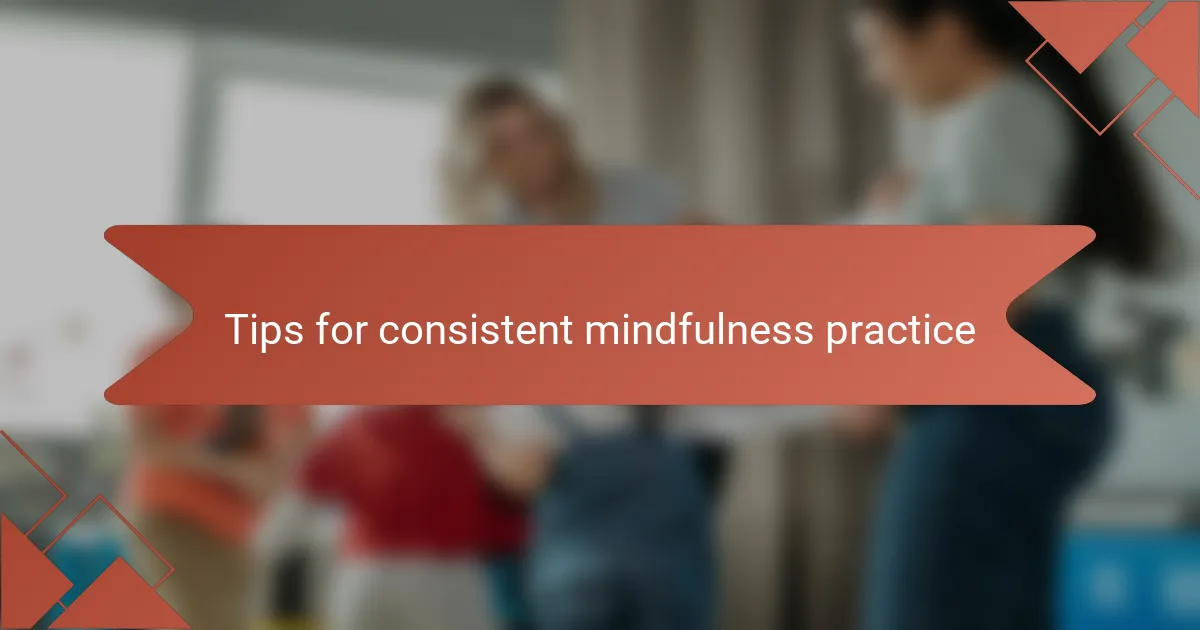
Tips for consistent mindfulness practice
Consistency has been key in keeping mindfulness a meaningful part of our family routine. I found that setting a regular time each day—even if just five minutes after breakfast or before bedtime—helped my kids know what to expect and made the practice feel less like a new chore. Have you ever noticed how children thrive on routine? That small structure really supports steady mindfulness habits.
Keeping sessions short and sweet also made a huge difference for us. Kids’ attention spans aren’t long, and trying to stretch a meditation beyond their comfort zone can backfire quickly. I learned to listen closely to their cues and switch to a different activity in the Calm app or simply take a break when needed. Isn’t it refreshing to honor their natural rhythms rather than force a perfect session every time?
Finally, I’ve realized that making mindfulness fun and interactive encourages regular practice. We often turn it into a game—like guessing the different sounds during a meditation or sharing how we feel afterward. That playful approach keeps my children engaged and makes coming back to Calm something they actually look forward to. Could a little creativity be the secret ingredient for lasting mindfulness? From my experience, absolutely.